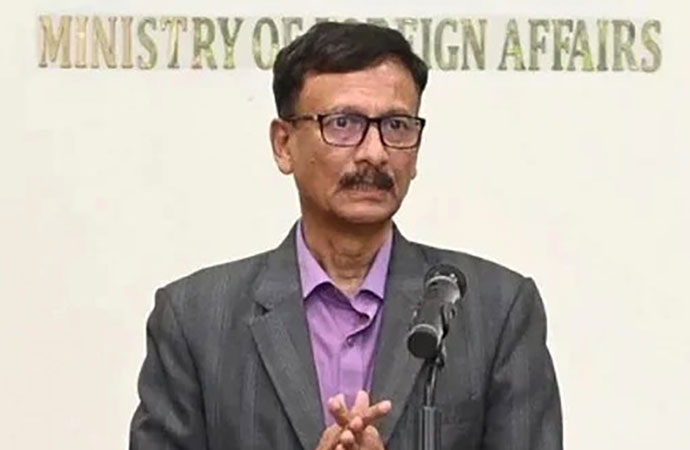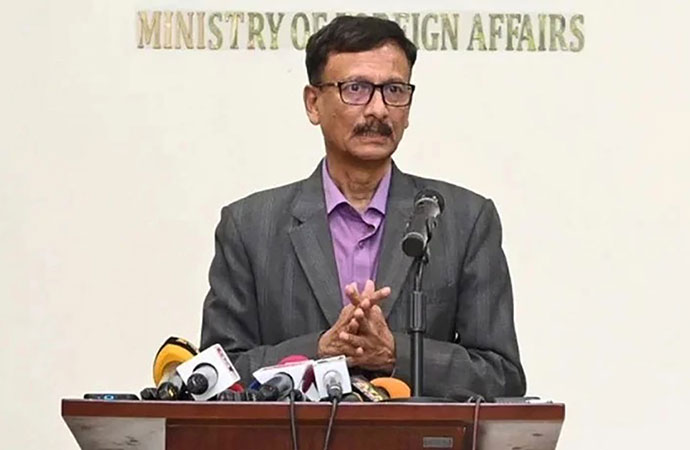Featured 1

Image: Courtesy
The last economic forecast of note for the year is in, and by and large it confirms the same themes that we saw develop over the course of 2022. It is the supplement to the Asian Development Bank's flagship quarterly report, the Asian Development Outlook, that last came out in September. The supplement released this week reiterates the three main headwinds that continue to hamper recovery in developing Asia: recurrent lockdowns in China, the Russian invasion of Ukraine, and slowing global growth. Growth forecasts for the region are revised down from 4.3% to 4.2% in 2022 and from 4.9% to 4.6% in 2023.
Coming to Bangladesh, the report states that the GDP growth projection for FY2023, i.e. the current fiscal ending next June, has been adjusted down on account of dampened exports and a widening trade deficit, continued high inflation and shortages of electric power and other energy, subdued remittances, and austerity measures adopted by the government to narrow a large financing gap. Whereas earlier the ADB had forecast Bangladesh's GDP growth at 7.2% for the current fiscal, now it expects just 6.6%. That's not pedestrian by any means, but it does slow our journey to emancipation, in which the principal driver is poverty reduction - i.e. reducing the proportion of the population that lives below the poverty line.
The last reliable study of poverty in the country, the Household Income and Expenditure Survey undertaken by the Bureau of Statistics, was carried out in 2016. After that, based on the findings of the 2016 study, we have some estimates up until 2018, which put the poverty rate at 20.5% of the population. In the years since then, we know that the COVID-19 pandemic had a particularly brutal effect on pushing a segment of the population that was getting by just above the national poverty line, below it. What we don't yet know is just how many of them got pushed over. Some of the smaller surveys by private research organisations have not returned encouraging results. A 2021 survey by the South Asian Network on Economic Modeling (SANEM) estimated that the poverty rate had practically doubled to an eye-watering 42%, while the rate of extreme poverty had escalated to 28.5% of the population from the 12% estimated in 2018.
How much store we can put by the SANEM survey results is only possible to ascertain by putting them next to an updated HIES, but there is no word yet of one on the horizon. Truth be told, in this day and age, the government should know better than to work with data dating back to 2016. Planning Minister M.A. Mannan, whose remit includes the BBS, was a highly accomplished civil servant before joining politics. He has made the right noises since taking the reins at the Planning Ministry, towards adopting a data-driven approach to the work of government (including the implementation of the Annual Development Programme), in which the revitalisation of the BBS is meant to play a key part. If he is truly serious about that, commissioning an update of the HIES in the new year, i.e. 2023, would be the ideal way to signal this intent.

























Leave a Comment
Recent Posts
Remembering Kalidas Karmakar ( ...
The art world remembers Kalidas Karmakar, a visionary whose creativity ...
An Evening with Shishir Bhatta ...
Cosmos Art Echo, the artist talk initiative of Gallery Cosmos and Cosm ...
Myanmar denies genocide, calls Rohingya crackdown co ..
Yes, of course
Earth’s average temperature last year hovered among ..
Bangladesh and Singapore: A Tale of Two Nations